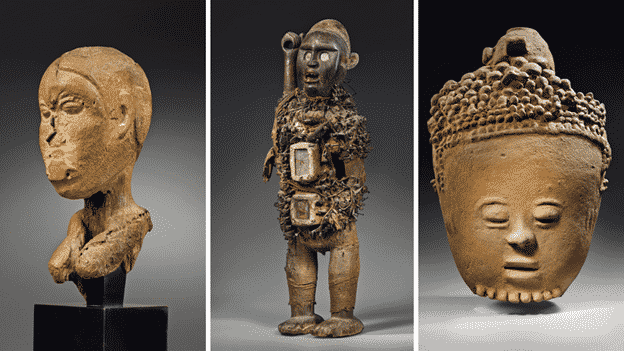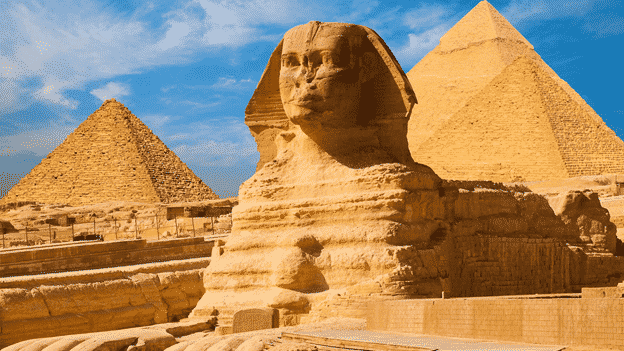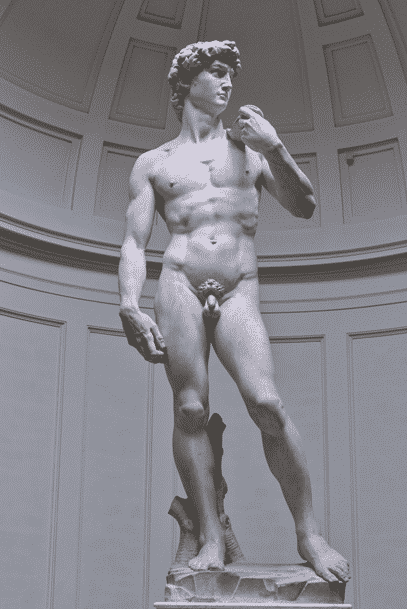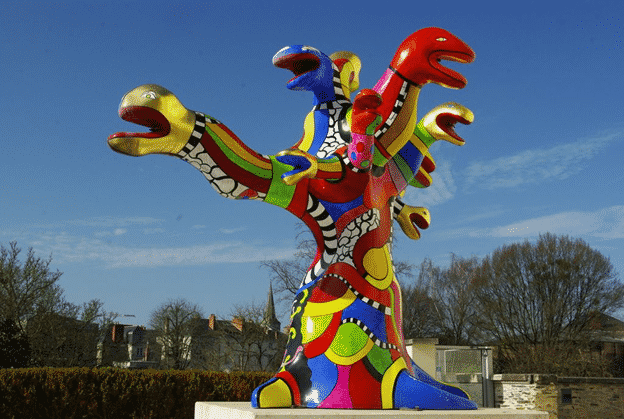The Two Processes Involved With Threedimensional Works of Art Are
Three-dimensional art pieces, presented in the dimensions of height, width, and depth, occupy physical space and can be perceived from all sides and angles. On the other hand, two-dimensional works of art, which are created on flat surfaces, can only exist observed in terms of superlative and width. Traditional types of three-dimensional media, like sculptures and reliefs, have been around since the beginning of human history equally show of people'south' need for artistic expression.
Sculptures have been predominant 3D art forms for centuries, evolving continually throughout different periods of art history. However, progressive art movements that boomed in the 20th century challenged the traditional perception of fine art, introducing unconventional fine art mediums to express their aesthetic and principles. This process resulted in the appearance of installation art and performance art equally the contemporary variants of 3D media.
This commodity volition nowadays the evolution of these three-dimensional media throughout history, focusing on unlike fine art mediums and techniques used in creating 3D artworks worldwide.

The Traditional 3d Art Forms
In the beginning, people created statues out of stone and wood. The get-go preserved art object was a small, rock-carved female figurine that dates back to 230,000 years B.C. There was an array of similar figurines found all over Europe. It is believed that these statues symbolized female person fertility and played significant roles in diverse rituals and ceremonies. These roughly carved art pieces presented our ancestors' first attempts to use natural materials to translate their behavior into a physical shape. Traditional three-dimensional types of sculpture derived from these basic art pieces are:
- A free-standing sculpture
This is a dominant 3Dart form that has been evolving since aboriginal times. Equally the name states, it is an independent art object that usually represents people, animals, or abstract motives. Artists use rock, woods, or metal to create statues, and the option of the right art medium depends on the size and complication of the artwork.
- Reliefs
As opposed to gratuitous-continuing statues, relief sculptures sally from the background as elements of a larger slice of art. We can recognize several different types of reliefs. Bas reliefs represent iii-dimensional compositions with statues slightly standing out against a groundwork. On the other hand, we take loftier relief artforms with statues projecting dominantly from the base of operations. Sunk-relief is an fine art type usually related to ancient Egypt, and it represented figures carved into the base.
Unlike Techniques Applied in Creating 3d Art
Artists accept applied diverse techniques to manipulate rock, wood, metal, or clay and transform them into desired art objects. The choice of art medium depends on the kind of statue you want to make. Typically, people utilize the following art techniques when creating iii-dimensional fine art:
- Stone or wood etchingis a procedure of cutting out pieces of material until you become the desired shape. This is one of the oldest art techniques that dates back to prehistoric times.
- Casting is an artistic method applied when working with metal every bit a chosen art medium. This creative process involves pouring hot metal into pre-prepared molds to create colossal statues or compositions. Cast bronze sculptures are mutual representatives of this creative method.
- Weldingis a creative method of blending two metallic pieces to create a sculpture chemical element. This technique is common in constructing iii-dimensional pieces combining different elements.
- Glass art techniquesinvolve handling hot, warm, or cold drinking glass to shape and model this medium. There are various techniques applied in this creative process, including drinking glass blowing, casting, and sculpting. Common cold glass techniques are engraving, rubbing, sandblasting, and acid etching.

Sculpture in Ancient Times
We will offer a brusk recapitulation of the evolution of sculpture as an art grade, and we will offset with the ancient civilizations that first developed a distinctive artistic style.
Ancient Egyptian Art
Sculptors in ancient Egypt were remarkably consistent in presenting feet, legs, and the caput, accompanied past a frontal presentation of the torso and an eye. This seemed to be the virtually convenient way for them to finish every piece. Another typical Egyptian sculpture is a seated statue, and these were typically placed in the tombs of royalty and other respectable people. These luxurious majestic statues were usually accompanied by a number of smaller small sculptures that represented the servants who needed to assist their masters in another life. These smaller figures were too intricately sculpted.
The statue of the Sphinx is the well-nigh famous Egyptian landmark, and it stands to baby-sit the archway of the pyramids at Giza. With the body and head of a lion and a human face, this is one of the most awe-inspiring statues of the ancient world.
The Classical Ideal of Greek Sculpture
Ancient Greeks were the first to introduce the idea of beauty and proportion into fine art, thus setting the foundations for traditional Western art. They tended to cultivate the artistic way of heroic realism, presenting people in a naturalistic way that required excellent skills. Ancient Greeks worshiped human beauty and created nude statues to gloat it. These nudes are amongst the greatest achievements of classical art.
Building and decorating the Parthenon marked the pinnacle of classical Greek sculpture. The statues and reliefs for this ancient temple were finished within 10 years, involving an array of skilled sculptors. The tradition of using reliefs and statues as ornaments stems from this flow, and it went on to boss the medieval European styles.
Indian Sculpture
Indian art dates dorsum to the 3rd centuryB.C. when the first Indian dynasty ruled. Sculptors created reliefs that depicted stories from the most prominent Indian religions, Hinduism and Buddhism. The presentation of characters is mainly frontal as if they are facing a camera. The nearly staggering motif in Indian sculpture of that time is that of a full-breasted adult female captured in nearly unusual poses.

History of European Sculpture from The Heart Ages to Modern Times
Medieval Sculpture
The most pregnant medieval European styles are Romanesque and Gothic. These styles are commonly related to architectural sculpture, where iii-dimensional pieces of fine art decorated the church columns. Medieval sculptors let their imagination run wild when decorating these columns with brilliant Biblical scenes and grotesque monsters. This was frequently met with strong disapproval of the church institution. Gothic is another recognizable artistic style that originates from the 12th century. Typical gothic sculptures are elongated and very thin, standing on narrow pedestals, their bodies covered in robes and their faces beaming with placidity.
Renaissance
After the Eye Ages, the Renaissance came as a long-awaited menstruum of liberation and reformation. This was one of the most significant and near fruitful periods in art history. When we talk about sculpture, everything revolves around Italian republic and neat Italian masters who embraced the Greek ideal of beauty and proportion and incorporated information technology in their works of fine art.
Mikelangelo stands out amidst others with his extraordinary genius and vision of sculpture. The writer ofDavid set the bar high, creating a timeless masterpiece from a single marble block that another sculptor had discarded.David is an example of an intricately detailed sculpture, and the facial expression perfectly depicts the mood.
Bizarre
This 18th-century creative style, warmly welcomed past the Roman church building, nourished excessive decoration and over-the-top details. This creative style represented all the things Protestants despised -opulence, style, and detailed presentation of Biblical scenes.
Neoclassicism
Coming after the over-accentuated Baroque menstruation, Neoclassicism came every bit the historic period of sobriety and returning to the values of archetype art. Sculptors went dorsum to worshipping the human trunk and creating sculptures with immaculate details.

Contemporary 3d Art Forms
The 20th century brought liberation from the ascendant influence of classic art. Rodin and another 19th-century sculptors inspired this shift with their works of art. Finally, sculptors started seeking other part models. African sculpture and Aztec masks had a significant impact on three-dimensional artists.
This century too marked the rising of glass art as a 3D art form. Artists started recognizing favorable features of glass that allowed shaping and modeling. Nowadays, at that place are meaning drinking glass fine art pieces, like sculptures and installations.
The art scene also witnessed the birth of installation and operation as innovative 3D art forms. Artists decided to challenge sculpture as a dominant class and turned to creating large-scale installations using unconventional materials. In this way, they wanted to emphasize the issues they cared about and brand them attainable to a broader audience.
Performance artists employ their bodies as the medium to express their artistic visions and principles. Functioning art projects may involve an array of participants or just the author. These may be multimedia events with lite furnishings or video projections, or they may rely on the author's interaction with the audience. Plainly, performance art allows authors to choose the perfect way to express themselves, and this is one of the most significant advantages of this artform.
Final Words
This concludes our account of the wide variety of three-dimensional art forms, following the development of three-dimensional media, from stone-carved prehistoric figurines to raw, improvisational and innovative art performances. This development procedure of contemporary art will keep, especially with the help of advanced technologies like 3D printing that have a meaning bear upon on the world of art.
Source: https://www.artdex.com/what-are-the-different-types-of-three-dimensional-art/
0 Response to "The Two Processes Involved With Threedimensional Works of Art Are"
Post a Comment